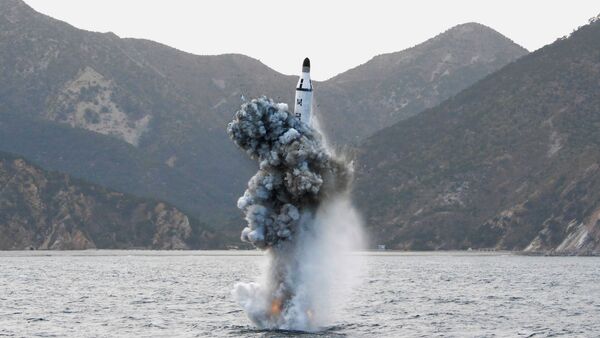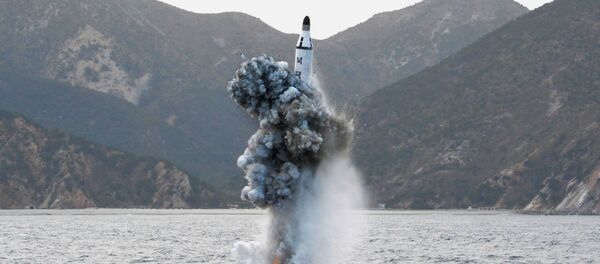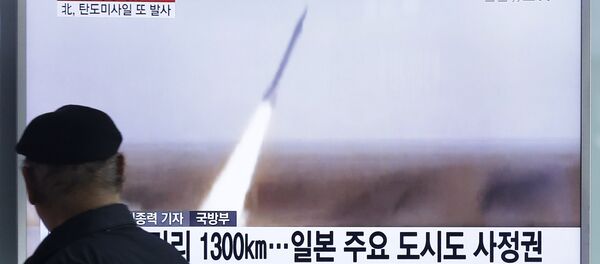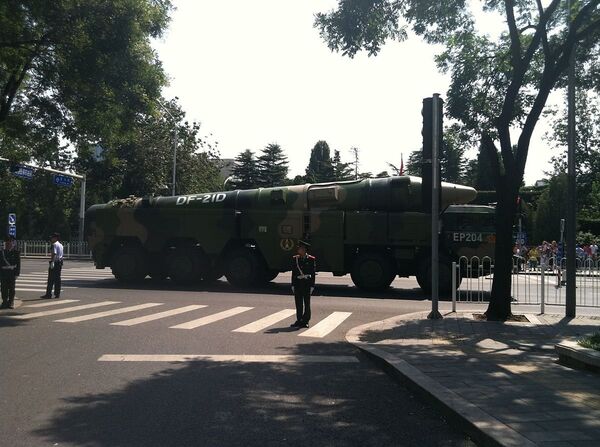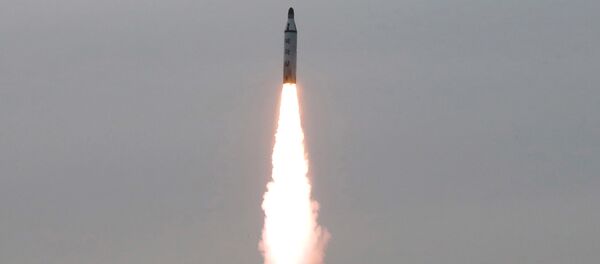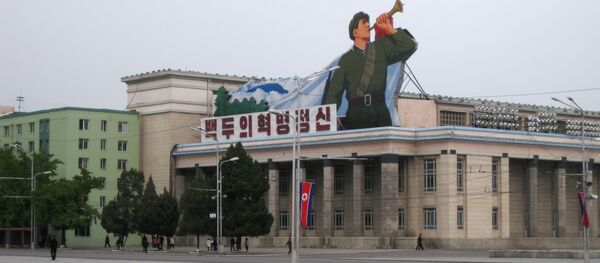Last week, Pyongyang conducted a successful test launch of its new SLBM, the KN-11, also known as the Bukgeukseong-1 or the Polaris-1. The missile, whose operational range and payload specifications have not been revealed, flew an estimated 500 km, reaching Japan's Air Defense Identification Zone in the Sea of Japan. North Korea has been engaged in creation of the missile since late October 2014. Experts have said that the success of the test indicates that the missile could be fielded as soon as 2017 or 2018.
US analysts, meanwhile, have warned that the new capabilities demonstrated by the test will complicate US missile defense planning in South Korea. Washington reached agreement with Seoul to deploy its Terminal High Altitude Area Defense (THAAD) system in South Korea in July, a decision Beijing and Moscow warned could lead to a new arms race in the region.
Russian analysts commenting on the North Korean test are split over its significance. On the one hand, they are concerned, together with the rest of the international community, over the implications the new capabilities will have on Pyongyang's policy. On the other, they are impressed by the North Koreans' success.
Speaking to the independent Russian online newspaper Svobodnaya Pressa, Vasily Kashin, a senior researcher at the Institute of Far East Studies at the Russian Academy of Sciences, explained that the successful test of a solid-fuel SLBM marked a double breakthrough for the DPRK's missile program.
"The main thing is not even the fact that they were able to create a SLBM (although that too says a lot about the level of their science and engineering), but that the North Koreans are now on the verge of creating a solid-fuel medium-range missile," the expert noted.
In their commentary on the new missile, South Korean media warned that it would give Pyongyang the ability to reach targets inside the continental United States. This, Kashin noted, was an overstatement, to say the least. Of course, "North Korea may try to send a sub armed with such a missile close to the US coast, but that is unlikely, given that the North Korean shipbuilding industry is quite backward. In other words, it's unlikely that the North Koreans would be able to ensure the safety of such boats."
Ultimately, the geopolitical analyst emphasized that North Korean engineers' successes in creating a solid-fueled medium range missile was much more significant than the fact that it was launched from a submarine.
"Here we can recall the story of the Chinese missile program from the 1970s, and the creation of the JL-1 SLBM missile, deployed in limited numbers on Beijing's only experimental missile submarine at the time. But the main outcome of of these tests was that they resulted in the creation of a whole family of intermediate-range missiles, known as the DF-21, which continue to be developed into the present."
This, the expert says, has to do with the fact that the country's existing missiles take a long time to prepare for launch – roughly one and a half ours, if not longer. That, in turn, makes them vulnerable. But with the KN-11, a solid-fueled system, "Pyongyang will be able to carry out a strake 15-20 minutes after receiving the order. And that's what South Korea fears most," Kashin noted.
"There's something else worth paying attention to," the expert added. "Until now, this class of weapon – a solid-fuel [medium-range] missile, could only be developed and produced by the permanent members of the UN Security Council, plus India. Pakistan and Iran's solid fuel missiles remain much more underdeveloped."
And here, North Korea, driven into a corner by sanctions and trade restrictions, suddenly develops these weapons, which it can sell on the global weapons market. "Of course, a ban on the export of missiles and missile technology from North Korea formally exists, and they really are being watched very closely," Kashin noted. "But while the export of the missiles themselves could be stopped, the transfer of the technology behind them may very well take place, and this is quite serious."
In fact, the expert suggested, Pyongyang may have developed the missiles for maritime launch explicitly as a form of marketing the new weapon, since it would have made more sense for them to concentrate on the creation of a land-based solid-fuel missile from the beginning, which they could effectively hide inside their territory. "After all, we must remember that the country's navy has a huge technological gap with those of Japan and South Korea, making the sub difficult to keep from being immediately sunk in case of conflict."
"I have always cited the example of the Chinese nuclear missile program, developed in the 1960s and 1970s. At that time China was a very poor country, but it only took four tests for them to create a nuclear warhead for their ballistic missile; the fourth test featured the launch of the rocket with a warhead on board, and it was successful. So I see no reason to assert that contemporary North Korea cannot create a nuclear warhead," the analyst concluded.

